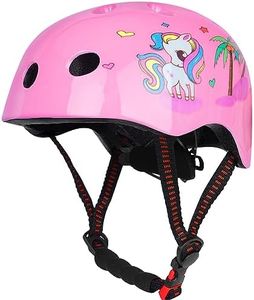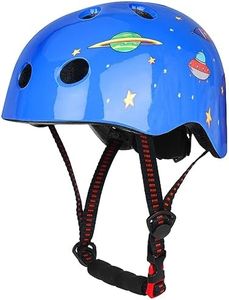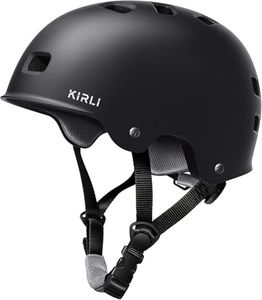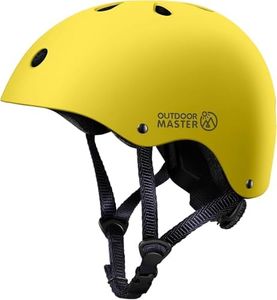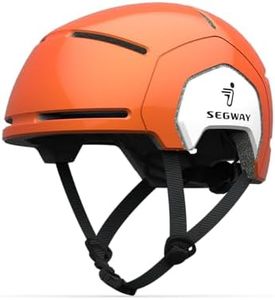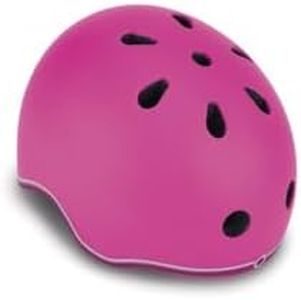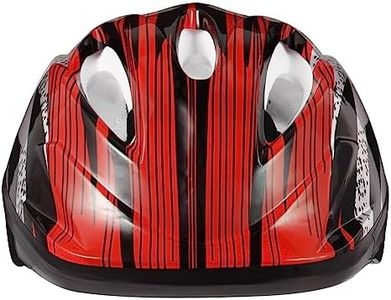We Use CookiesWe use cookies to enhance the security, performance,
functionality and for analytical and promotional activities. By continuing to browse this site you
are agreeing to our privacy policy
9 Best Infant Bike Helmets
From leading brands and best sellers available on the web.Buying Guide for the Best Infant Bike Helmets
When choosing an infant bike helmet, it's important to focus on both safety and comfort for your little one. A good helmet will protect your child's head during rides, fit properly, and feel comfortable so your child won't resist wearing it. Take the time to learn about helmet features so you can make an informed decision. Always prioritize certified safety features and ensure the helmet is specifically designed for infants, as their needs are quite different from older kids or adults.Helmet Size and FitHelmet size refers to the circumference of the inside of the helmet, which should match your child's head measurement. A proper fit is crucial since a loose helmet won’t provide adequate protection, while a tight helmet will be uncomfortable and possibly not worn at all. Infant helmet sizes generally cover smaller head circumferences, often starting around 44 cm. Adjustable fit systems, like dials or removable padding, can help get the fit just right. It's best to measure your child's head and consult sizing charts to choose the right size; always try the helmet on if possible to ensure a snug, comfortable fit that doesn’t move when your child shakes their head.
Safety CertificationsSafety certifications indicate that the helmet meets certain safety standards. The most common certification in the US is CPSC, but other countries have their own standards. This spec is important because it assures you the helmet has passed impact, retention, and strap tests specific for children. Always look for a certification sticker inside the helmet. Never use helmets that don’t meet required safety standards, as uncertified helmets may not adequately protect your child's head.
VentilationVentilation refers to the number and design of holes or slits in the helmet that allow air to flow. Good ventilation helps keep your child’s head cool, which can make wearing the helmet more comfortable, especially in warm weather. Infant helmets usually have fewer, smaller vents compared to adult versions for increased protection, but you still want some airflow. For occasional, short rides, venting isn’t as critical, but if you ride often or in hot conditions, look for a helmet with several well-placed vents.
Helmet WeightHelmet weight is how heavy the helmet is. For infants, lighter helmets are preferable since heavy ones can strain their necks and make them less likely to keep the helmet on. Helmets for infants should be lightweight but still sturdy enough to offer good protection. If your child seems uncomfortable or has trouble holding their head up, a lighter helmet should be considered. Typically, infant helmets will be among the lighter options compared to those for older kids or adults.
Retention SystemThe retention system includes the straps and buckle that hold the helmet on your child's head. For infants, soft straps and easy-to-use buckles are important for both comfort and safety. The system should be adjustable so it can be snugged up as your child grows, but straps shouldn’t pinch or irritate the skin. Some helmets feature padded chin straps or magnetic buckles that are easier for parents but difficult for an infant to undo on their own. Choose a helmet where the retention system is simple for you to use and comfortable for your child.
Shape and CoverageThe shape and coverage of a helmet refer to how much of your child’s head is protected. Helmets for infants often have a rounder, deeper design that covers more of the back and sides of the head, which is important since infants may be riding in bike seats or trailers. More coverage means better protection if your child falls or bumps their head. Look for a shape that doesn’t interfere with child seats or carriers, and ensure the helmet sits low on the forehead and covers the back of the skull.
Padding and ComfortPadding is the soft material inside the helmet, providing both comfort and a better fit. More or thicker padding can help absorb sweat and make the helmet more pleasant to wear, especially on longer rides. Some helmets come with extra sets of pads in different thicknesses that can be swapped out as your child grows. Choose a helmet with enough padding so it’s comfortable from the start, and ensure any materials used are soft and skin-friendly.

